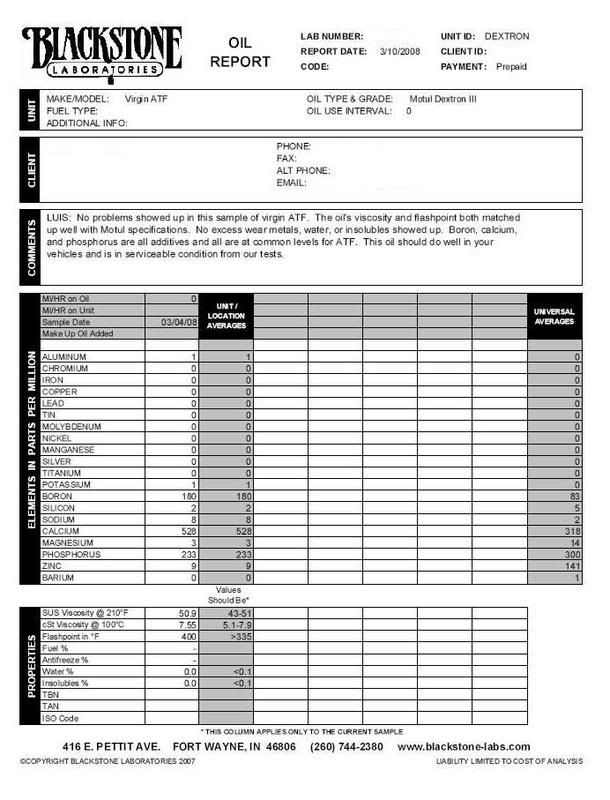The failure after a flush is a chicken or the egg type of situation. Transmissions are normally ignored, and only when the driver happens to notice a different behavior from it do they think that perhaps now it is time to replace that fluid which should have been changed 50k miles ago.
They take it to the iffy lube joint, pay the 89.95 and soon after it fails completely. A problem is that a flush does not require the transmission pan be dropped and the filter changed. So the new fluid with it's limited amount of detergents, still has enough gusto to wipe some things clean and clog the filter. Filter clogged and the transmission soon fails and soon we get the flushing causes transmission failures reports.
The rumor of transmission fluid being chock full of detergents is also an old wives tail. There are no byproducts of combustion that a transmission fluid has to deal with or suspend, like a motor oil has to deal with, so they are not present in great quantities. These detergents, traditionally calcium or magnesium based are not antiwear, or extreme pressure additives like zinc or phosphorus or Moly, or boron.
A high detergent motor generally chooses either magnesium or calcium as the detergent/ dispersant, and in a virgin oil analysis, the PPM range will be from 1200 to 3500.
Here shows a VOA of a high quality synthetic Dexron 3, and it shows very little magnesium or calcium.
Since Tranny fluids are much thinner than motor oils I believe this is the reason why adding it to motor oil seems to help clean things up and quieten ticking lifters. Most of the world is convinced thick oil protects better, and this is true, if it gets upto 300 degrees C, but a healthy engine will keep it no higher than 150C in the hottest parts. Thick vs thin oil can be debated forever.
One time in Baja a very old guy and his Toyota came up to my camp, asked for my aluminum cans, and for some motor oil, and by the sounds of the engine it was extremely low. I had only a half quart of oil, but I did have a quart of ATF+4, and poured both into the engine, and it just brushed the bottom of the dipstick indicating he was still very low on oil.
He came back a few days later and the engine was purring like a kitten which he attributed to the transmission fluid, and his passenger seat had one empty bottle of ATF and 2 more full. He was hoping to trade his Generic ATF for more of My Super duper ATF+4, as he was convinced it was absolutely magical.
I bet there is a whole bunch of people down there are now convinced that transmission fluid and motor oil is the secret engine sauce. When all that happens when transmission fluid is added to oils, is that the motor oil gets thinner, and its detergents, and other carefully formulated additives are diluted to a significant degree.
If a quart of TF quietens an engine, I propose that a quart of 5 weight motor oil would have had the same effect. There are no 0w-5 motor oils available yet, but Marvel Mystery Oil is pretty close to this and is loaded with solvents like chlorinated paraffins and a load of phosphorus, with is an antiwear additive. MMO has a loyal following.
I use it to clean the Stainless steel panel on my fridge, and burn some in my fuel, but I use undiluted motor oil only in my engine and ATF+4 in my transmission.
Lubegard red bottle is a respected transmission additive. Lucas Trans addis just an oil thickener, which might be enough to nurse a failing transmission along.
The OP should first check the fluid level. Note on Dodges, the level must be checked engine running, in neutral. Not sure about other makes. If the fluid is not low, then a pan drop and filter change will get about 1/3 of the old fluid out. If the Pan is ugly with large bits of metal in it, don't bother replacing it, save for the rebuild. If it is just dirty with a thin pasty ferrous sludge, clean it, replace the filter and 4 to 5 quarts of the correct fluid, and see how the transmission behaves afterward. it might like it, it might hate it. If it likes it, then another pan drop and 4 more quarts could be even more beneficial. Adding a drain plug to the transmission pan makes dropping and adding 4 more fresh quarts simple.
Van transmissions tend to give out right around 130k miles, so it might be wise to just start saving rather than the effort of nursing a weak one along for another 5k miles.












































































